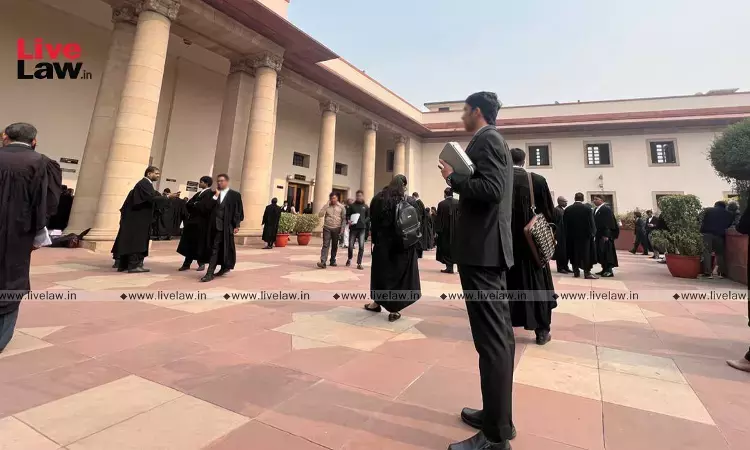Writing Of Debt And Debt Restructuring: Another Conundrum With The Ordinance Amendment To The Insolvency Bankruptcy Code

Economic development needs an evolved legal system that can support and complement it. The need for refined corporate case resolution with the rise in complexity of investments and global market integration was one of the intentions of a consolidated comprehensive law on corporate insolvencies and bankruptcies in India. This took the shape of the Insolvency and Bankruptcy Code, 2016 (IBC)....
Economic development needs an evolved legal system that can support and complement it. The need for refined corporate case resolution with the rise in complexity of investments and global market integration was one of the intentions of a consolidated comprehensive law on corporate insolvencies and bankruptcies in India. This took the shape of the Insolvency and Bankruptcy Code, 2016 (IBC). Now, it is critical to note that the IBC was championed as a legislation which would also look at the debt market as a separate investment strategy option and enable the Indian economy to overcome the era of writing of debt as the only way to manage a situation where a debtor is unable to pay or a company malfunctions.
Given the complexity of the economic makeup with different types of the investment engines that have become available, investment through debt instruments and intercompany arrangements with external commercial borrowings have also found their place in the market. The IBC, on its own has left a lot of room for court interpretation, one such being what constitutes as a wilful defaulter, fraudulent promoters and who can repurchase stressed assets. The corrective measure being once again being the ordinance route – which is the recent trend of passage of laws.
Simply put, 'wilful' or habitual defaulters has been a creditworthiness criteria even in the past corporate and insolvency laws. However, what constitutes as a wilful defaulter has been a subject matter of court interpretation and has undergone judicial scrutiny at numerous occasions. Elements of fraud and mismanagement have been previously extended by the company law board and various high courts in different cases to determine the determination criteria for a wilful defaulter. One such instance being Kingfisher Airlines case (KFA Case). The driving force behind disallowing promoters (in cases such as KFA Case) to bid on stressed assets (assets of a company that has found itself unable to pay its debts) is fear of mismanagement resulting in another economic and social cost that can hurt the development product of India. This of course is fair, therefore, the IBC introduces the term 'fraudulent promoter' into the mix. The IBC at present did not place restrictions on repurchase of stressed assets (example, loans that have not been repaid) but through the new ordinance, aims to build a wall to circumvent future mismanagement.
However, the amendment caters to only a class of promoters and does not cater to the bourgeois investors and companies. Situations of companies where the debt is not so large or the promoters can find a fix through individual pooling of resources and risk, have been overlooked. The characterization in the amendment ordinance does not come with clear legislative intent and creates more room for ambiguity as it disallows companies to opt out of debt through other means such a debt buy outs. An example of a debt buy out that saved jobs and assisted in translating the economic dent created by the scam was Tech Mahindra's investment into Satyam. Options such as this should be available as a part of the resolution plan and the jobs of insolvency professionals, on a literal read, includes assistance on this aspect as well.
India's economic market today has the debt market as a separate category where investors purchase debentures and aim at restructuring assets. Further, in the age of non-banking financial companies, asset reconstruction companies that are gaining significance, which have created their own debt bubble and gained economic viability, the option of writing off a stressed asset as a bad debt should not be the first criteria. This unfortunately seems to be the underlying ideology behind this amendment ordinance.
Moreover, this amendment could potentially also be challenged on grounds of arbitrariness as it does not take into consideration cases of one person companies or single promoter companies that start out on high working capital and less profit and often face early closure. With the parallel existence of start-up subsidies and the encouragement to start more businesses with the 'ease of doing business' motto, this amendment which is also in anticipation of "certain promoters buying out stressed assets" and therefore needs passage by ordinance, is incongruous.
The implementation of the IBC has faced several roadblocks and hurdles, primarily because of the absence of a plan of action and the unpreparedness in executing it. While upheavals of this scale require hit and trials, the IBC is now creating interpretation hurdles and leaving room for court intervention more so now instead of integrating the positive elements of the laws that actually worked effectively prior to its introduction – namely, the SARFESI Act, 2002.
In the age of slow debt recovery tribunals, the SARFESI Act with its restructuring options and resolution method was credible and worked. In fact, the IBC resolution plan method could also be attributed to the effectiveness with which cases were resolved under the SARFESI. With the amendment ordinance, the credibility of the resolution plan also becomes a potential issue since promoters of a company are no longer allowed to be resolution applications. Even in a case of a medium sized or a large companies, where the possibility of majority oppression exists or can exist pending resolution, the exclusion of promoters becomes a threat, since minority shareholders can also be promoters. Moreover, this could also lead to deadlock situations within the company, hostile takeovers and leave room for anti-competitive practices.
On its own, while there is a need to have an interpretation text for the IBC, since its integration process into the legal system is still ongoing, the passage of this ordinance 'in anticipation' of misuse of loopholes, may not be the best idea. Further, piecemeal clarifications will add to more confusions especially since legal practitioners and the newly trained and appointed members of the National Company Law Tribunals are still familiarizing themselves with the law and its workings. The interplay of the provisions needs to be factored prior to making a definition based and foundational amendment on reacquisitions of stressed assets and promoters. Lastly, there has to be reduced bureaucratic intervention for the IBC to be futuristic in nature and the amendments require complex deliberations rather than trial runs with ordinances.
Ishana Tripathi is a masters candidate in law and economics at the University of Hamburg.[The opinions expressed in this article are the personal opinions of the author. The facts and opinions appearing in the article do not reflect the views of LiveLaw and LiveLaw does not assume any responsibility or liability for the same]




